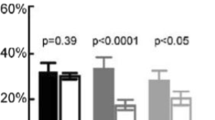Abstract
Loudness adaptation, or the decrease in perceived loudness of a steady, prolonged tone is rather a mysterious phenomenon. When measured by one technique (utilizing both ears), loudness of an extended tone will decrease by as much as 35 decibels; when measured by another technique (using only a single ear), loudness does not adapt at all regardless of how long the tone persists. The mystery is even more intriguing. When loudness adaptation does occur, the fractional reduction in the loudness of a tone (adaptation dB/sound level of extended tone dB SL) provides a good measure of the Stevens exponent, n, for loudness, an exponent which depends on sound frequency. When we analyze mathematically the two methods for measuring loudness adaptation, the reason for the apparent difference in adaptation emerges. Moreover, we derive the approximate equation showing that n equals fractional adaptation, and a method for improving the derivation of n from adaptation data. These results, derived mathematically, compare well with measured data, both our own and those obtained from the literature.
Similar content being viewed by others
Abbreviations
- φ :
-
Sound pressure level expressed as a multiple of a subject’s own threshold level; φ is also known as “sensation level” or SL. May also be expressed as sound energy per unit area per unit time, again as a multiple of threshold level. φ may also be expressed as “sound pressure level” or SPL, although we shall not do so in this paper
- dB SL:
-
Decibels sensation level; 10 log10 φ
- SDLB:
-
Simultaneous dichotic loudness balance
- A :
-
Sound level of a tone introduced into the control ear in an SDLB procedure after adjustment by the subject to match the loudness of a tone in the other ear. Expressed in decibels sensation level (dB SL). A=10log 10 φ a
- B :
-
Sound level of a sustained tone introduced into the adapting ear. Expressed in decibels sensation level (dB SL). B=10log 10 φ b
- γ :
-
Parameter that governs the degree of adaptation
- m :
-
Slope of the regression line obtained when decibels of adaptation are plotted against sound level of the sustained tone in decibels sensation level (dB SL)
- n :
-
Loudness exponent that appears in the power law of sensation
References
Bassingthwaighte, J.B., Liebovitch, L.S., West, B.J., 1994. Fractal Physiology. Oxford University Press, London.
Copelli, M., Roque, A.C., Oliveira, R.F., Kinouchi, O., 2002. Physics of psychophysics: Stevens and Weber-Fechner laws are transfer functions of excitable media. Phys. Rev. E 65, 060901.
D’Alessandro, L.M., Norwich, K.H., 2009. Loudness adaptation measured by the simultaneous dichotic loudness balance technique differs between genders. Hear. Res. 247, 122–127.
Gisiger, T., 2001. Scale invariance in biology: coincidence or footprint of a universal mechanism? Biol. Rev. 76, 161–209.
Hood, J.D., 1950. Studies in auditory fatigue and adaptation. Acta Oto-Laryngol. Suppl. 92, 1–57.
Jerger, J.F., 1957. Auditory adaptation. J. Acoust. Soc. Am. 29, 357–363.
Kinouchi, O., Copelli, M., 2006. Optimal dynamical range of excitable networks at criticality. Nat. Phys. 2, 348–352.
Luce, R.D., Mo, S.S., 1965. Magnitude estimation of heaviness and loudness by individual subjects: A test of probabilistic response theory. Br. J. Math. Stat. Psychol. 18(2), 159–174.
Marks, L.E., 1974. Sensory Processes: The New Psychophysics, pp. 73–74. Academic Press, San Diego.
Newman, M.E.J., 2005. Power laws, Pareto distributions and Zipf’s law. Contemp. Phys. 46, 323–351.
Nieder, B., Buus, S., Cazals, Y., Scharf, B., 2007. Loudness reduction induced by a contralateral tone. J. Acoust. Soc. Am. 122, 35–37.
Norwich, K.H., 1977. On the information received by sensory receptors. Bull. Math. Biol. 39, 453–461.
Norwich, K.H., 1993. Information, Sensation and Perception, pp. 152–153. Academic Press, San Diego. Also pp. 189–191. A slightly updated version may be found at http://www.biopsychology.org/norwich/isp/isp.htm.
Norwich, K.H., 1997. Noncompartmental models of whole-body clearance of tracers: A review. Ann. Biomed. Eng. 25, 421–439.
Sagi, E., D’Alessandro, L.M., Norwich, K.H., 2007. Identification variability as a measure of loudness: An application to gender differences. Can. J. Exp. Psychol. 61, 64–70.
Schroeder, M., 1991. Fractals, Chaos, Power Laws. Freeman, New York.
Small, A.M. Jr., Minifie, F.D., 1961. Effect of matching time on perstimulatory adaptation. J. Acoust. Soc. Am. 33, 1028–1033.
Stevens, S.S., 1961. To honor Fechner and repeal his law. Science 133, 80–86.
Stokinger, T.E., Cooper, W.A. Jr., Meissner, W.A., 1972. Influence of binaural interaction on the measurement of perstimulatory loudness adaptation. J. Acoust. Soc. Am. 51, 602–607.
von Békésy, G., 1929. Zur Theorie des Hörens: Über die Bestimmung des einem reinen Tonempfinden entsprechenden Erregungsgebietes der Basilarmembran vermittelst Ermüdungsercheinungen (“On the theory of hearing: On the determination of an area of excitation of the basilar membrane, which corresponds to a pure tone, that exhibits fatigue”). Phys. Z. 30, 115–125.
von Békésy, G., 1960. Experiments in Hearing. Translated by E.G. Wever. McGraw-Hill, New York.
Weiler, E.M., Loeb, M., Alluisi, E.A., 1971. Auditory adaptation and its relationship to a model for loudness. J. Acoust. Soc. Am 51, 638–643.
Weiler, E.M., Blackmond, H. Jr., 1973. Auditory adaptation: Loudness balancing vs. midplane localization. J. Aud. Res. 13, 101–104.
Weiler, E.M., Sandman, D.E., Agnello, J.G., 1985. Auditory adaptation: Notes on power and parabolic curve fitting across intensity: II. J. Aud. Res. 25, 31–35.
West, R.L., Ward, L.M., Khosla, R., 2000. Constrained scaling: the effect of learned psychophysical scales on idiosyncratic response bias. Percept Psychophys. 62, 137–151.
Wiley, T.L., Small, A.M. Jr., Lilly, D.J., 1973. Monaural loudness adaptation. J. Acoust. Soc. Am. 53, 1051–1055.
Author information
Authors and Affiliations
Corresponding author
Rights and permissions
About this article
Cite this article
Norwich, K.H. A Mathematical Exploration of the Mystery of Loudness Adaptation. Bull. Math. Biol. 72, 298–313 (2010). https://doi.org/10.1007/s11538-009-9447-1
Received:
Accepted:
Published:
Issue Date:
DOI: https://doi.org/10.1007/s11538-009-9447-1



